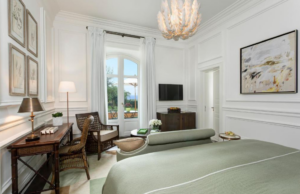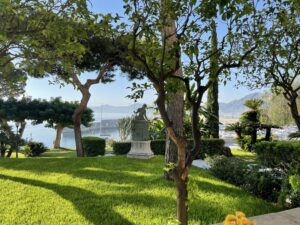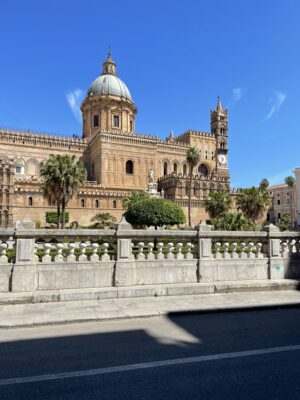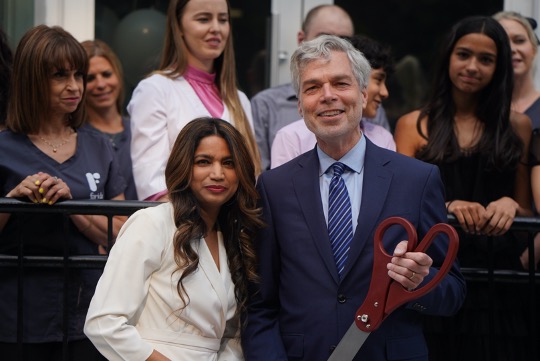
You can’t put Palermo, Sicily’s capital city, in a little box, or even in a mighty big one. It is a vast, sweeping anomaly of a city, which might be grand and patrician along one street, flyblown and down at heel on the next. Signorinas strut the elegant Corso in impossibly high heels while just yards away, fishwives shriek from their trestle tables set up on the side streets. On elegant Via della Libertà, the Gucci store stands next to a used guitar shop and three doors along from a thrift store. It’s quite a mix.
The Greeks, Romans, Byzantines, Arabs and latterly Normans have all hung their hats in Sicily at some point and left their indelible mark on it. Palermo’s cathedral, 1,000 years old and one of the most dramatic in all Italy, stands proudly center stage. But less than a mile away, the city’s docks seem to want to hide themselves behind broken gates and fences, almost ashamed, although they are indeed the wellspring of Palermo’s wealth and glory. The historic center is a patchwork: Even 80 years after the Allies bombed Palermo in World War II, the city center has not been fully rebuilt.

Before I saw any of this for myself, though, I gleaned many of these insights from my taxi driver, Marco, who drove me from the airport to my hotel. Somehow, we got to talking about the many peoples who have called Sicily home. “You’ll notice I’m blond with blue eyes,” he told me proudly and, looking at his reflection in the driving mirror, it was hard to miss. “It’s because we’re all Norman – even my uncle in Queens.” Marco had diamond studs in both ears and wore navy blue, monogrammed slippers for driving, which he said were a present from his fidanzata (fiancée). Norman or not, Sicilians have style in their DNA.
At the door of Villa Igiea, where he dropped me, formalities were kept to a minimum. Check-in sorted in seconds, a factotum whisked me to my corner suite and opened the net curtains to reveal a jaw-dropping, Merchant-Ivory view. I gazed in delight across manicured, palm-fringed green lawns with stone statues, umbrella pines and cypresses, down to the little port and the sparkling Gulf of Palermo beyond.
Once the home of the influential Florio family, this Belle Époque villa has been gloriously restored by Rocco Forte Hotels and is now, beyond doubt, the most luxurious hotel in Palermo. Nodding respectfully to the past but unafraid to embrace the present, Olga Polizzi – Forte director of design and RFH chairman Sir Rocco Forte’s sister – has paid as much attention to comfort as to beauty, and the result is a holistic decorating triumph.
Guest rooms were the last word in freshness and zing. At turndown, clothes were folded and put away and the bathroom completely refreshed and resupplied. Miniature bottles of still and sparkling water were placed on the nightstands along with edible treats. The drapes were drawn, blinds lowered, lights dimmed and the plushest slippers (in appropriate his and her sizes) arranged on a blanched linen mat. (Oh, Conrad Hilton: Thou shouldst be living at this hour.)
With its Belle Époque ballroom, Art Nouveau reception rooms, magnificent carved staircases and a pair of dreamy terraces to drink and dine on under the stars, all I will say is that if you are not a bucket-list kind of person, you should create one immediately and stick Villa Igiea at the top of it.
Back at the front desk, I saw valued guests being welcomed back with genuine affection, greeted by staff with a little bow from the waist and outstretched hands, which in Italy is not a sign of subservience but of friendship and respect. I also bumped into a familiar face, John McLean, formerly of the Lanesborough Hotel in London but now manager of Brown’s, another Rocco Forte hotel, also in London. “Not a bad little spot this, is it?” he quipped, with absurd understatement.
Mealtimes are sheer joy. Breakfast – freshly baked breads and pastries, Sicilian squeezed orange juice, étagères of fruit, custardy treats and ripe Italian cheeses. Or a typical lunch served at the Alicetta pool bar (with a stool brought for my beach bag) – spaghetti with red mullet and baby tomatoes, bursting with natural sugar and sunshine. And then dinner, on that terrace, when the sun had just set and the little lights in the gardens and in the port beyond had just come on, and the air was scented with jasmine and frangipani and a pianist was playing Gershwin. Summertime and the living at Villa Igiea was indeed blissfully easy.

Alternatively, this being Palermo, you could just totter down the hill towards the port, as I did on my second evening, and have a fish fry-up on bare, rickety tables under strip lighting and an electric fly zapper and get change from $15 (including wine.) In its way, this is an equally special experience as the tony hotel terrace.
Next morning, the pool boy, Vincenzo, greeted me and said in his charming English, as he ushered me to my chaise longue and swaddled it in the plushest white beach towels, “Should you need something, sir, please just raise your hand and I will arrive.”
Looking down through the lemon trees and swaying palms – and an imagined Slim Aarons lens – I glimpsed a small day boat just beyond the hotel’s marina, and spied long-legged, bronzed children, maybe 10 or 12 years old, playing on the small deck and, at a distance, could even hear their high-pitched, excited voices having summer fun. This is not my life, I reflected, but still, it’s how some lucky people are able to live. And any smidgen of envy vaporizing, it was a thought I found oddly life-affirming.
For more, visit roccofortehotels.com.




















